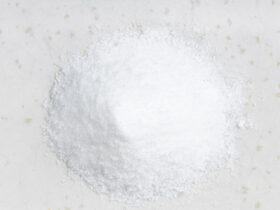Ferric Chloride (FeCl3) is a chemical compound comprising iron and chlorine, existing in various states, such as anhydrous (devoid of water) and hydrated (containing water) forms. When we mention Ferric Chloride 38%, we are referring to a solution of ferric chloride with a concentration of 38% by weight. This implies that out of every 100 grams of the solution, 38 grams constitute the actual ferric chloride compound, while the remaining 62 grams typically consist of water or other solvents. This solution finds common usage in a variety of industrial, laboratory, and water treatment applications.
Ferric Chloride 38% is frequently employed in water treatment applications, primarily serving as both a coagulant and flocculant for the purpose of eliminating impurities, particles, and contaminants from water. Coagulation entails the process of destabilizing and amalgamating suspended particles and colloids, facilitating their easy removal. Concurrently, flocculation involves gently agitating the water to promote the formation of larger aggregates, or flocs. In the coagulation and flocculation phases, ferric chloride is introduced into the water to furnish positively charged ions, which counterbalance the negative charges on suspended particles. This balancing act encourages these particles to converge and unite, resulting in the creation of larger particles that either settle or can be more efficiently filtered out.
Additionally, ferric chloride finds utility in the removal of phosphorus from water bodies, as it forms insoluble compounds with phosphate ions. This application is pivotal in mitigating nutrient pollution and curbing excessive algae proliferation in aquatic environments. Furthermore, in select instances, ferric chloride can serve as a pH-adjusting agent, particularly when there is a need to lower the water’s pH level. Moreover, in certain scenarios, ferric chloride plays a role in diminishing the generation of disinfection byproducts, which can be detrimental when chlorine or other disinfectants are employed within the water treatment process.
It is crucial to emphasize that while ferric chloride demonstrates efficacy in specific water treatment applications, its utilization requires vigilant monitoring to avert over-treatment and guarantee compliance with regulatory standards governing water quality and safety. Furthermore, the management and disposal of the sludge produced during the treatment process must be executed diligently to forestall environmental contamination. Given the intricacies of water treatment procedures, which can fluctuate depending on the distinct water source and treatment objectives, it is advisable to seek guidance from water treatment experts and adhere to regional regulations and recommendations when employing chemicals such as ferric chloride for water treatment endeavors.
Ferric chloride solution, boasting a 38% concentration, enjoys widespread application in etching, particularly in the fabrication of printed circuit boards (PCBs) and various metal etching tasks. Etching is a process that selectively removes metal from a substrate to craft patterns, circuits, or designs. Ferric chloride serves as a preferred etchant for copper and other metals due to its potent oxidizing attributes. In this process, a prepared substrate is immersed in a bath of ferric chloride solution. The ferric chloride acts on and dissolves the exposed copper while safeguarding the unexposed copper beneath the remaining photoresist. The etching progression undergoes vigilant monitoring to ensure it proceeds as intended. The etch rate may fluctuate based on variables like solution temperature and agitation.
Ferric chloride garners favor as an etching agent owing to its efficacy and relatively safe handling compared to certain other potent etchants. Nonetheless, it’s essential to bear in mind that ferric chloride can leave stains on surfaces and clothing, demanding the observance of proper safety precautions during use. Additionally, the byproducts stemming from the etching process, including spent ferric chloride solution and waste materials, necessitate meticulous management and disposal, conforming to local regulations to forestall environmental contamination. For precise, consistent outcomes, it is highly advisable to adhere to established protocols and best practices when employing ferric chloride for etching applications.
Ferric Chloride 38% also has potential applications in chemical synthesis, notably as a Lewis acid catalyst. A Lewis acid, defined as a species capable of accepting an electron pair from a Lewis base during a chemical reaction, finds ferric chloride well-suited for this role. Due to its electron-deficient nature, ferric chloride functions as a Lewis acid, facilitating a range of chemical reactions. These reactions encompass Friedel-Crafts, Halogenation, Esterification, Oxidation, Polymerization, and Cyanation reactions, among others. It’s important to highlight that while ferric chloride can serve as an effective catalyst, its utilization demands careful control to ensure the desired reaction outcomes. Considerations such as catalyst concentrations, reaction conditions (including temperature, solvent choice, etc.), and safety precautions all merit attention when incorporating ferric chloride into chemical synthesis processes.
Prudent handling of ferric chloride is paramount due to its corrosive properties, which can lead to skin and eye irritation. The use of gloves and protective eyewear is strongly recommended. Furthermore, the solution can pose environmental hazards if not managed and disposed of in accordance with best practices, as it has the potential to release deleterious ions into aquatic systems. It is imperative to consistently adhere to established safety measures when working with or handling chemicals such as ferric chloride.
Level7Chemical.com distinguishes itself as the prime choice for procuring Ferric Chloride 38%, providing a dependable source that guarantees both quality and convenience.









